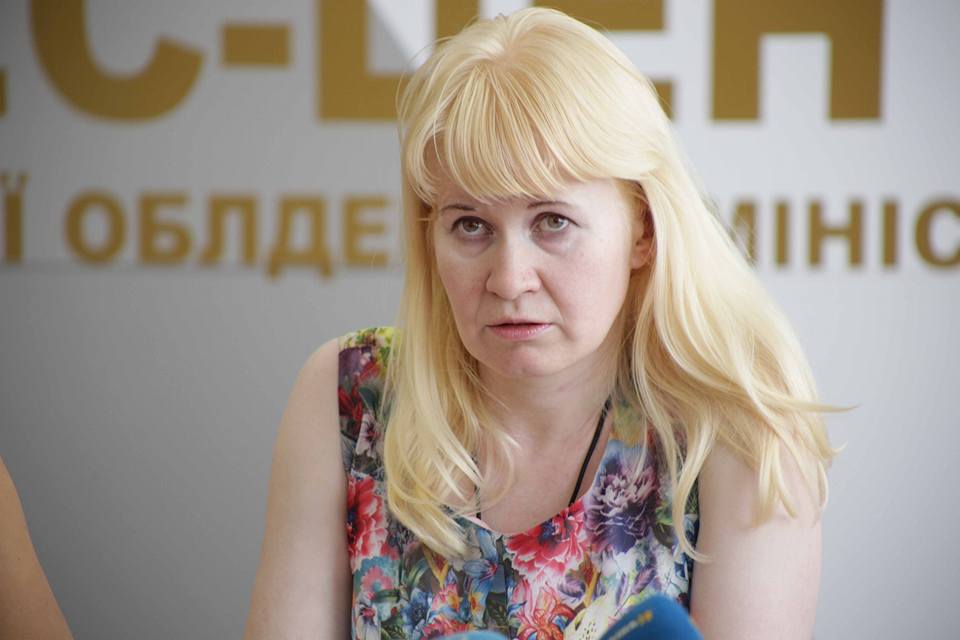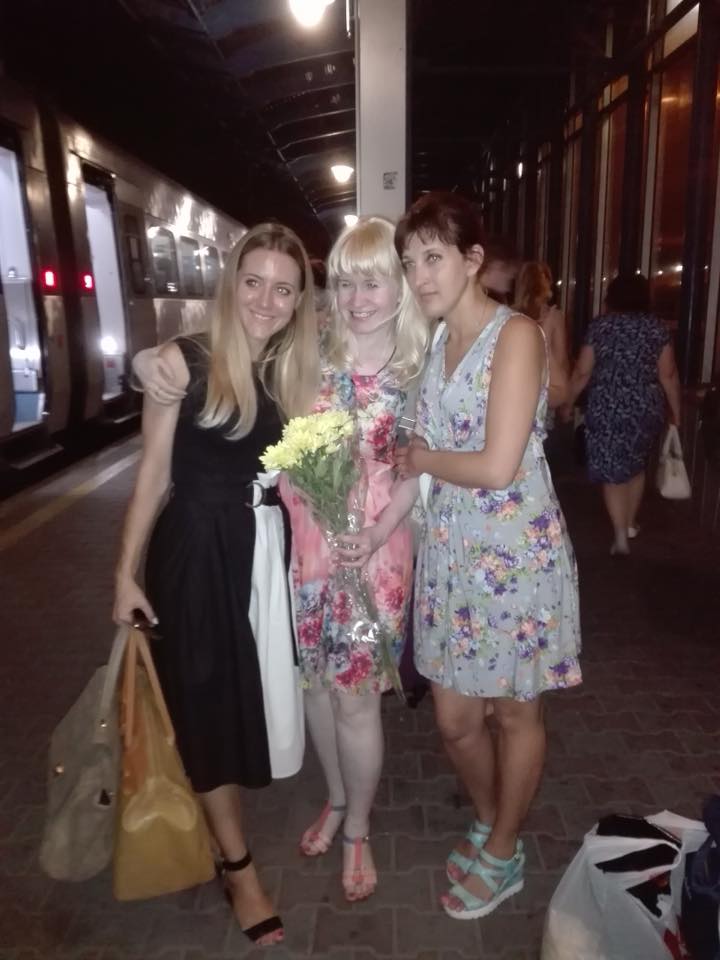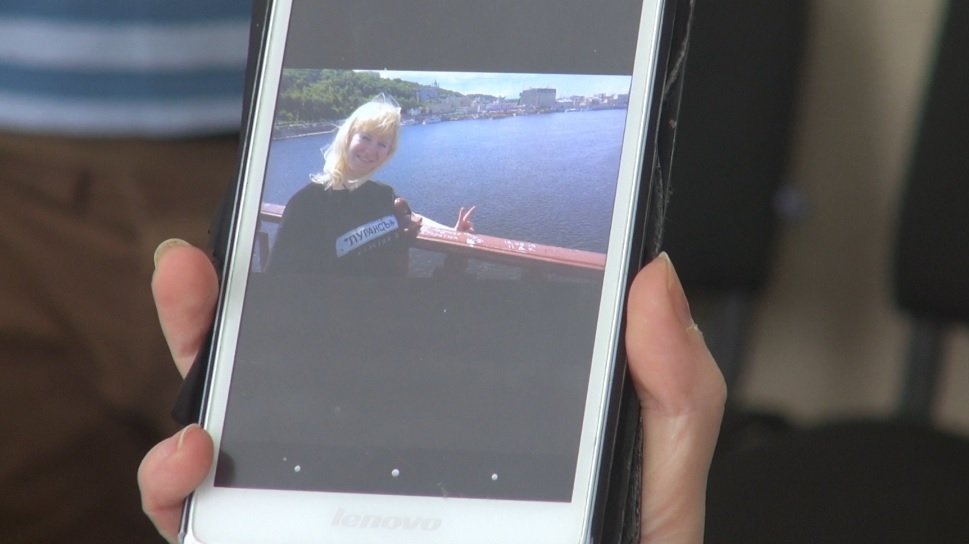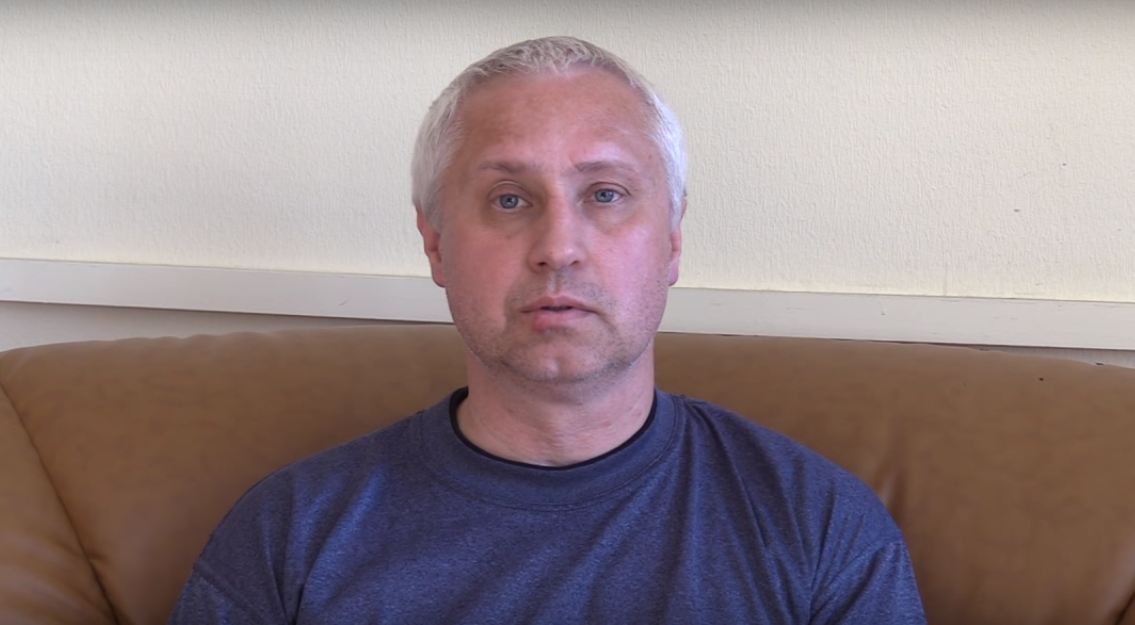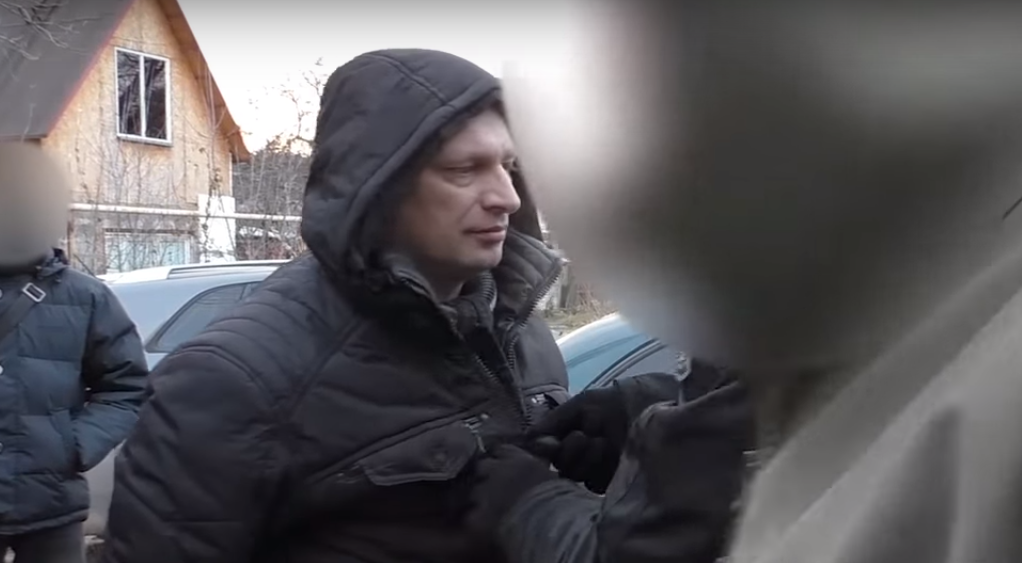As we reported earlier, the occupation authorities of the Luhansk People's Republic," a Russian-backed proxy statelet in Ukraine's east, released hearing-impaired Liudmyla Surzhenko on 29 July following her 16-day illegal captivity. She was expelled from her occupied hometown of Luhansk. On the same day, acting Ukrainian judge Vitalii Rudenko was released after his nine-month illegal imprisonment in the occupied part of Luhansk Oblast, where he had come to visit his father's funeral in the occupied city of Sorokyne (formerly Krasnodon) in fall 2016. Later, the occupation authorities informed that the so-called "military court of LNR" sentenced two "citizens" to 12 and 14 years in prison for "state treason." The hostages were not named, but one of them has been identified as a prominent Luhansk blogger Eduard Nedeliaiev kidnapped in fall 2016. The Luhansk police agency reported the arrest of three more pro-Ukrainian activists.
Liudmyla Surzhenko discloses details of her arrest and captivity
On 13 July, Luhansk resident Liudmyla Surzhenko was detained at the LNR checkpoint near the Ukraine-controlled settlement of Stanytsia Luhanska. On 29 July she was released from captivity and expelled from her home town.
Read more: Luhansk militants tortured disabled Ukrainian woman to make her “confess” she is a spy
Ms.Surzhenko told journalists that she went to Stanytsia Luhanska with her friends to receive humanitarian aid from a religious organization. Surzhenko personally cared for an old woman and children of her relatives. On her way back to Luhansk, as she had gone through the passport control at the checkpoint of so-called LNR, Liudmyla was asked what was in her bags. Surzhenko explained that it was humanitarian aid, but couldn't remember the name of the organization which provided it. Having examined her bags, captors took her passport and the cell phone for rigorous inspection. Surzhenko said, "My phone was checked and they found lots of pro-Ukrainian photographs there. There were photos of me in a T-shirt "Luhansk is Ukraine," photos with the Ukrainian flag." Liudmyla signaled to her friends to avoid approaching her because she was being arrested.
Surzhenko told that later she was brought to the so-called LNR's "Ministry of State Security" [MGB, the name of the Soviet KGB in the times of the World War II]and was questioned there. She was asked about her "subversive activities," how many such pro-Ukrainian T-shirts she had smuggled into Luhansk, what she did while visiting Kyiv and Moscow.They tried to break my finger to extort my password for social networks.
The captors even tried to trump up charges of a 7 July Luhansk terror attack against her (on 7 July, two explosions rocked the center of Luhansk, killing 1 military medic officer, wounding 5 civilians). "They deprived me the right of a phone call, my mother was calling but they didn't allow me to reply. I wasn't provided with a lawyer. All the people who conducted the 'investigative actions' against me didn't introduce themselves."
During the questionings, Liudmyla was threatened, tortured. She said, "They tried to break my finger to extort my password for social networks."
The "investigators" threatened to jail her for 12-20 years on charges of espionage in favor of Ukraine. "When they read my Facebook, they accused me of the incitement of enmity and hatred. But I don't understand what is it all about. How can we love those who came with war to our lands?" Ms.Surzhenko comments.
Liudmyla told her captors that the battery of her hearing device would remain charged until 1 August, and then she would not hear them. She believes this was a key point why she was released.
Upon release, she was promised to be taken home. But they blindfolded her and brought to the checkpoint to government-controlled Ukraine to expel Surzhenko from her hometown.
The humanitarian Ukraine's envoy in the Trilateral Contact Group on Ukraine, MP Iryna Herashchenko wrote on her Facebook page, "As all other hostages, on the initiative of the president, she will undergo examination, treatment, and rehabilitation in one of the departmental clinics."
Surzhenko shared her plans for the future, "I plan to return to my city in future. It's in my heart. I want to go back to my city to participate in its restoration... Luhansk is Ukraine, it has always been and will be Ukraine."
Judge Vitalii Rudenko is free
The judge of the Luhansk Oblast Court of Appeal, Vitaliy Rudenko returned to government-controlled Ukrainian territory on 29 July 2017. He had been kept in the illegal custody of the MGB for nine months. According to the SBU (Ukraine's Security Service), his release was made possible with the support of the volunteer group “Patriot” and the SBU.
After he was detained, Rudenko was put into solitary confinement for 46 days. During the first 12 days of imprisonment, no charges were made. Later Rudenko was accused of "state treason."
Rudenko was a "catch" for his captors and they used threats, both against him and his family, to force him into speaking in a propaganda video, rejecting Ukraine and saying that he wants to remain in the "LNR."
In his interview with the TSN news show, Rudenko said that the Russian-controlled Luhansk militants have free access to the database of the Ukrainian unified register of pre-trial investigations which contains all information about criminal proceedings, investigators, and judges.
Both Surzhenko and Rudenko were earlier put on the so-called Minsk lists, the official exchange lists of Ukrainian prisoners.
Three allegedly taken hostage for raising a Ukrainian flag in Luhansk
On 3 August, the so-called Ministry of Internal Affairs of LNR published a report about the detention of three 18-year-old men in Luhansk on 21 July. The occupation police agency told a dubious story of the apprehension, alleging that the police was called because someone broke windows of a school building. As the police arrived on the scene they saw that "a passerby has already detained three 18-year-old well-oiled boys."
Later in their report, the so-called police mention that detained 18-year-olds raised a Ukrainian flag on a flagpole near an academic building of the former East-Ukrainian University and "cut the rope to exclude the possibility of removing the flag."
Earlier, "the criminals painted Ukrainian flags on the school building, on the next day they painted the monument for Marshal Zhukov on the school premises the same way, two days later they toppled the pedestal," according to the report. The "criminal investigation" is underway.
The portrait sculpture of Zhukov, a Soviet-Russian officer in the Red Army of the Soviet Union, was unveiled in 2015 by occupation authorities.
Unfortunately, there is no possibility to fact-check the story at the moment. There are no other reports confirming the detention, no further information about the identities of detainees, no confirms about the activities described in the report of the occupation police agency.
Kangaroo court sentences two hostages to 12 and 14 years
On 1 August, one of the sites of the Russian-backed statelet of the Luhansk People's Republic (LNR) published a report
, stating that a so-called military court in the LNR sentenced two citizens to 12 and 14 years in prison for "state treason." The site does not name the two people, referring to the man sentenced to 14 years only as "N," while the woman is called "V."
The Kharkiv Human Rights Protection Group (KHPG) identified the N-man as Eduard Nedeliaiev, a prominent Luhansk blogger known as Edward Ned and @Edward_luhansk, who was seized in Luhansk in November 2016.
“Citizen N, using social media and messengers, spread negative information about LNR residents on the Internet, denigrating the honor and dignity of the citizens, he tried to stir up hatred and enmity to the Russian nation," the published text reads, "He also passed representatives of foreign intelligence information able to harm our state in order to undermine the foundations of our national security.”
The KHPG assumes that the mentioned 'citizen V' may be 52-year-old Valentyna Buchok, kidnapped in March 2017 in the so-called DNR, who was accused of "spying" for the SBU.
However, "V" may be anybody of Luhansk residents whose case hasn't gone public.
- As of 31 July, DNR and LNR terrorist organizations were holding 137 Ukrainian hostages, according to Adviser to the Chairman of the Security Service of Ukraine Yuri Tandit.
- Nothing has been heard about many captured Ukrainians like Vlad Ovcharenko and Artem Akhmerov for many months.
- Journalist Stanislav Aseyev was seized in Donetsk early in June this year
- Roman Sahaidak, a 30-year-old entrepreneur from Sorokyne (formerly Krasnodon), was abducted in Luhansk on June 30.
- 63-year-old religious specialist and academic Ihor Kozlovskyy was taken hostage in Donetsk in January 2016.
- 24-year-old civic activist Volodymyr Fomichov was captured in occupied Makiivka in January 2016 as he visited his relatives.
Read more:
- Luhansk militants tortured disabled Ukrainian woman to make her “confess” she is a spy
- Russian soldiers captured in Ukraine: an exchange pool for Ukrainian hostages
- Ukrainian journalist missing in occupied Donetsk, illegal arrest suspected
- Ukrainian hostages in the “LNR” and “DNR: The price of life
- Russian judges deny Crimean Tatar hostage last meeting with dying mother
- Moving poem by Yuliya, wife of Oleksandr Korinkov, prisoner in the “DNR”
- There can be no delay in implementing Minsk clause to release hostages
- Ukraine moves forward with issue of political hostages held by Russia
- No progress on release of hostages — Poroshenko

